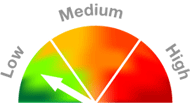SAFETY ALERT! Flooding
SAFETY ALERT! Flooding
Lake Awoonga Recreation Area
Current blue-green algae levels a Lake Awoonga Recreation Area

Boynedale Bush Bush Camp
Current blue-green algae levels at Boynedale Bush Camp

BGA Alert Levels explained: GAWB monitors and adjusts BGA alert levels according to NHMRC Guidelines for Managing Risks in Recreational Waters (2008).
Green level – Low – Biovolume >0.04 to <0.4mm 3/L
Amber level – Medium –Biovolume ≥0.4 to <4mm 3/L for the combined total of all cyanobacteria where a known toxin producer is present.
Red level – High – Biovolume ≥4mm 3/L for the combined total of all cyanobacteria where known toxin producer is dominant.
The definition of dominant is where known toxin producer comprise 75% or more of total cyanobacteria in sample.
It is also a requirement that BGA cell numbers are below this HIGH alert threshold for at least 2 consecutive samples before the alert level is lowered.
Yearly BGA Graph – Riverston Bay
Yearly BGA Graph – Awoonga Dam Intake Tower
Blue-Green Algae (also called Cyanobacteria, Cyanophtyes or Cyanoprokaryotes) are microscopic photosynthetic bacteria that are natural inhabitants of our waterways, estuaries and the ocean. In still water, such as lakes, ponds and reservoirs, BGA can multiply rapidly, resulting in “blooms”. BGA blooms are common over summer in farm dams, lakes, estuaries and in slow moving rivers in all states of Australia, occurring in response to warmer water temperatures and increased nutrients or ‘eutrophication’. They can cause the water to become discoloured with a green, blue-green or greenish-brown appearance.
Some blue-green algae (BGA) species are toxic and can release their toxins into the water column. There is strong evidence that BGA toxins can cause illness in humans and animals. Some BGA and other algae species also contain compounds which cause earthy tastes and odours in the water.
GAWB regularly monitors Lake Awoonga for the occurrence of BGA blooms by undertaking visual inspections and regular water quality monitoring. The information from this monitoring is essential to our recreational and water storage management processes.
GAWB has in place a Harmful Algal Bloom Action Plan, developed in accordance with the National Health & Medical Research Centre (NHMRC) Guidelines for Managing Risks in Recreational Waters (2008) and National Health and Medical Research Council/Natural Resource Management Ministerial Council (NHMRC/NRMMC), Australian Drinking Water Guidelines Paper 6 National Water Quality Management Strategy (2011).
BGA Alert Signs are located around the lake recreational areas providing information about the current BGA levels and recommendations on what activities are advisable.
For more information on Blue Green Algae visit the Queensland Government webpage on Harmful Algae.
Drinking untreated water directly from Lake Awoonga or any lake or river is not advised, as it could contain bacteria, pathogens, BGA and other contaminants which could affect human health.
The treatment process used by GAWB to produce drinking water at its Treatment Plants is designed to efficiently remove BGA cells to produce safe drinking water and destroy any potential toxins in the water. This process is constantly monitored by our operators to ensure that we continue to provide high quality drinking water to the Gladstone community.
During a High BGA Alert, GAWB recommends that you do not come into contact with the water (eg swimming, skiing etc); however, we do not prohibit activities on the Lake. If you do intend on swimming or other recreational activities that bring you into direct contact with the raw water in Lake Awoonga during a High BGA Alert, you should be aware that BGA can cause skin and eye irritation.
Drinking untreated or boiled raw water can result in illness (boiling the raw water does not destroy the BGA toxins).
GAWB have BGA hazard alert signs located at the various recreational areas at Lake Awoonga –these should be referred to when visiting the lake. These signs have information on BGA and indicate the current alert level.
Beef producers and agricultural users in the region who source their water directly from the Boyne River and its tributaries should be aware that BGA blooms can occur on farm dams and at sites accessed along the waterways. Farmers should prevent access to affected water and provide alternative supplies. Current research indicates that BGA toxins can also affect cropping. Further information regarding this should be sourced from the relevant authorities, including the Department of Primary Industries.
BGA toxins can accumulate in the edible flesh of crayfish, mussels and other shellfish. Anglers are reminded that BGA toxins can also accumulate in the internal organs of fish. Mussels, yabbies and other shellfish caught in algae infested waters should not be consumed. The liver and gastro-intestinal tract of fish caught in BGA infested waters may be poisonous and should not be consumed. Further information regarding the impact of BGA on fisheries should be sourced from the relevant authorities, including the Department of Primary Industries.

The Gladstone Area Water Board proudly acknowledges the Byellee, Gooreng Gooreng, Gurang and Taribelang Bunda people as the Traditional Custodians of the Gladstone region. We pay our respects to Elders past and present, and recognise the ongoing connection of Aboriginal and Torres Strait Islander peoples to the land and water on which we rely.